WE LEFT THE MEDITERRANEAN BEHIND YESTERDAY. The road is long, with many a winding turn, through time-warped mountain villages where tractors have yet to replace donkeys. We were headed for Pamukkale with a major detour to Aphrodisias, not the ancient version of Viagra but one of the best preserved Hellenistic sites in Turkey. It was a sanctuary to the goddess of love, given special status by none other than J. Caesar, himself.
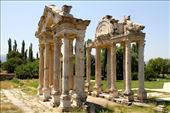
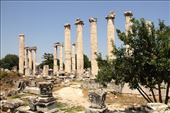
Tetrapylon, Aphrodisias Temple of Aphrodite
No snow today, as on our last visit, and more visitors. There have been some additions, too, as archeologists from Oxford and NYU continue to explore and recreate the wonders of the past, including a three-story sanctuary for the Roman rulers and a well-appointed museum.
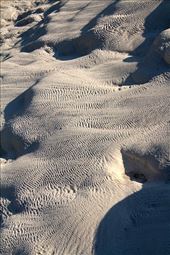
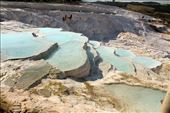
Tough on the feet ... but beautiful
While overweight and underdressed tour groups poured from buses at the top, we ooched and ouched our way up Pamukkale’s travertine monolith, not realizing that shoes were prohibited until it was too late. The travertine was covered with bumps and ridges that made for secure footing but took their toll on my tender tootsies.

Travertine at Pamukkale
The travertine is in better condition than we remembered it, thanks to UNESCO’s investment and new water management system. But they failed miserably with the “Sacred Pool,” now a swimming hole/food court newly christened as “Cleopatra’s Pool” and with an extra $15 entry charge.
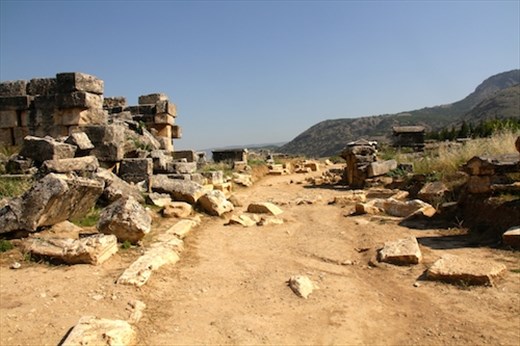
Street of the Dead, Hierapolis
Two thousand years ago, the Roman elite came to Hierapolis, as the city was called, for the waters. If the size of the necropolis is any indication, they were deceived. Some ailments just can’t be cured with hot radioactive water. There are some 1200 tombs scattered along the mile-long main street making this the world’s most impressive necropolis — if such a thing is possilbe.